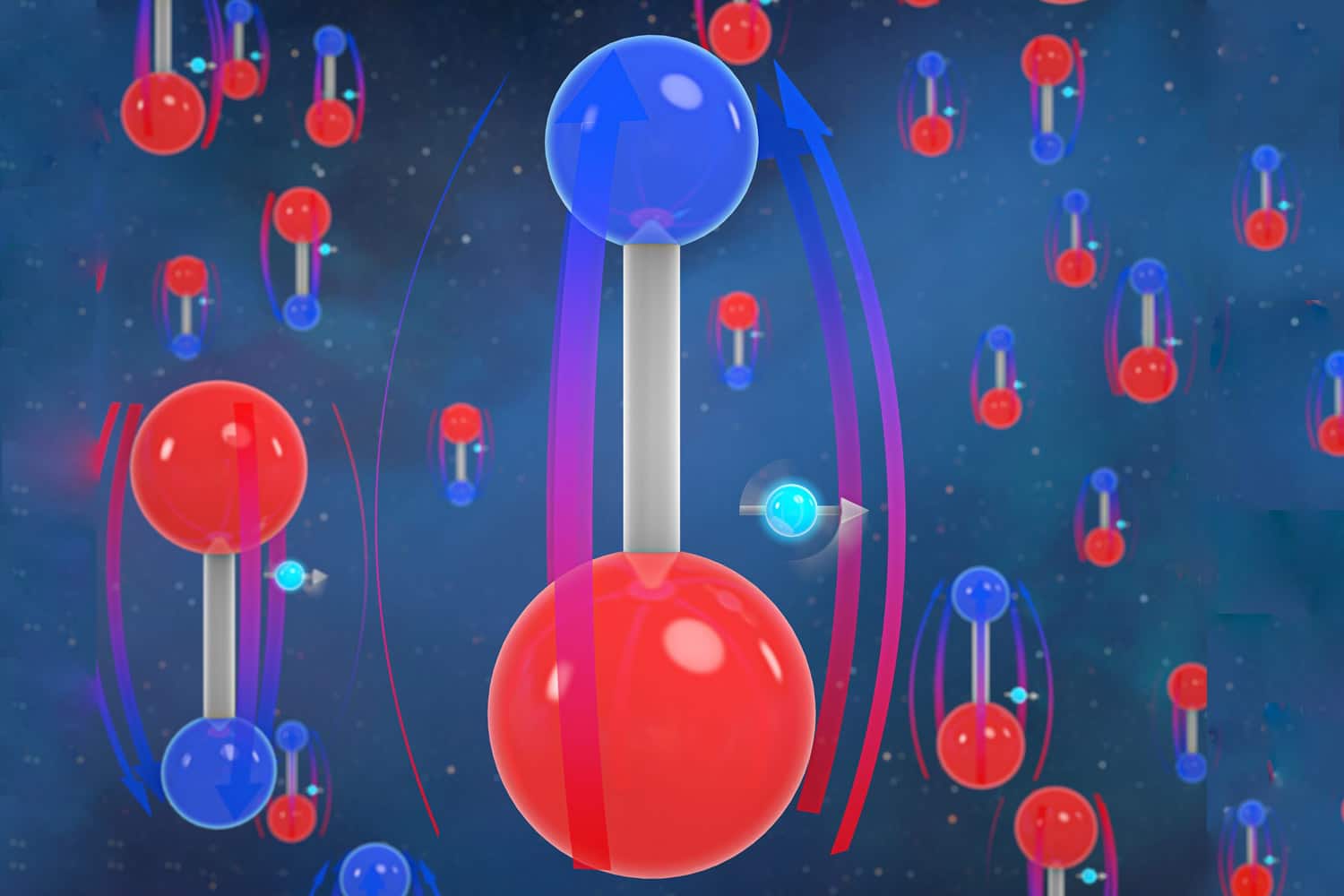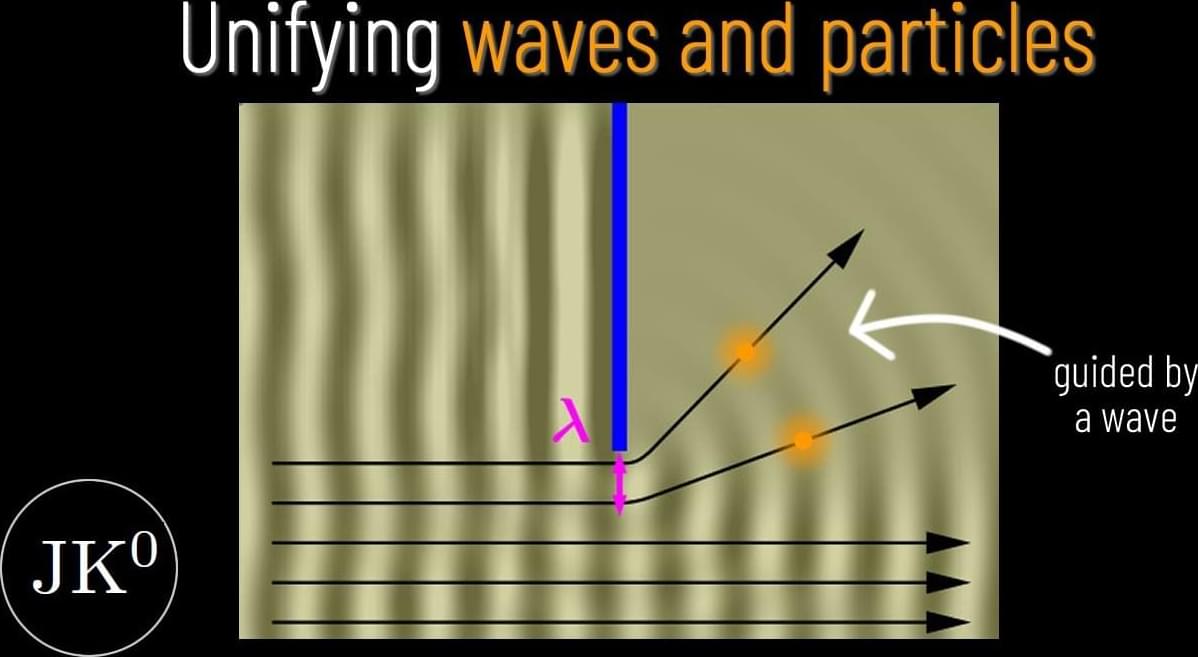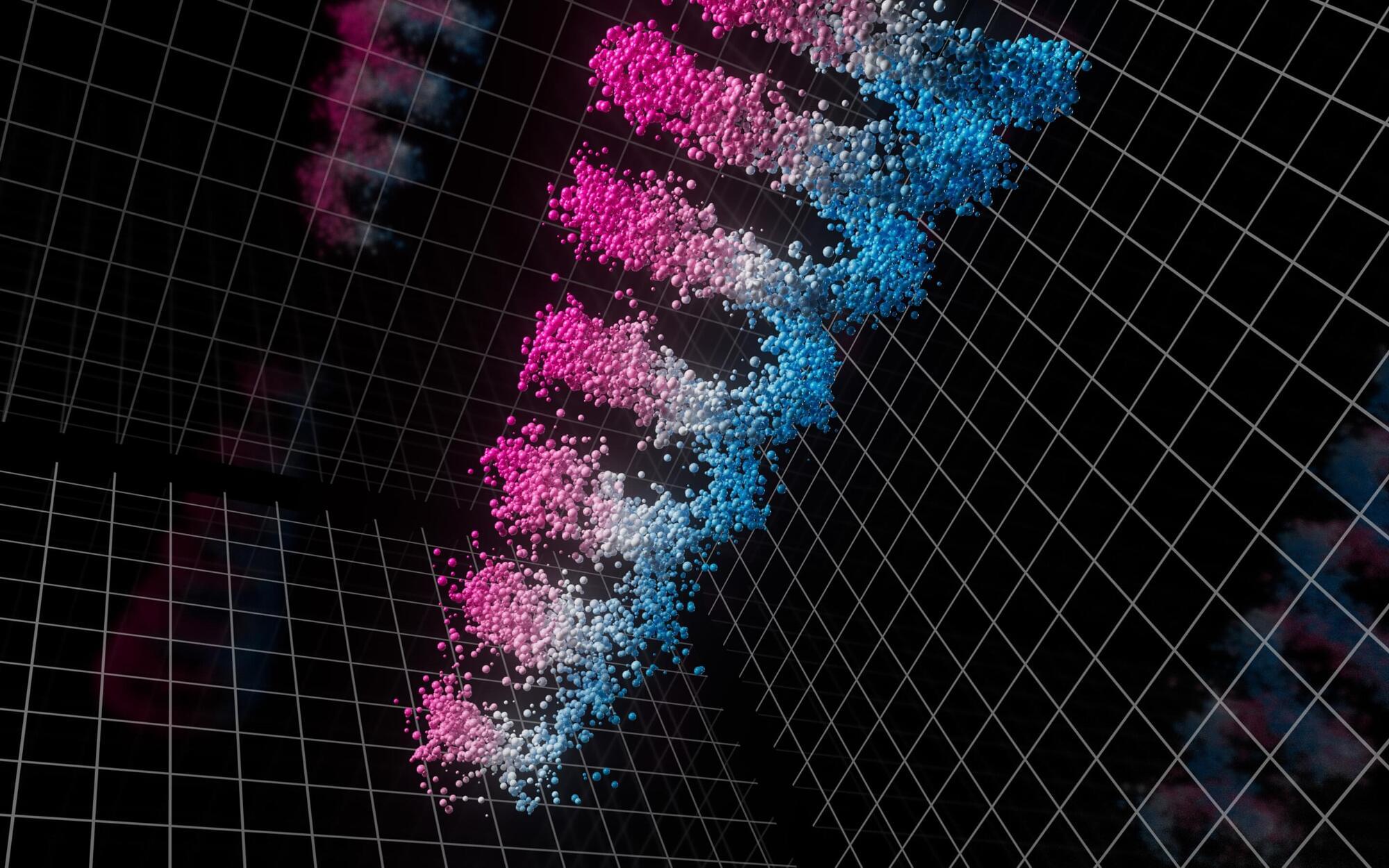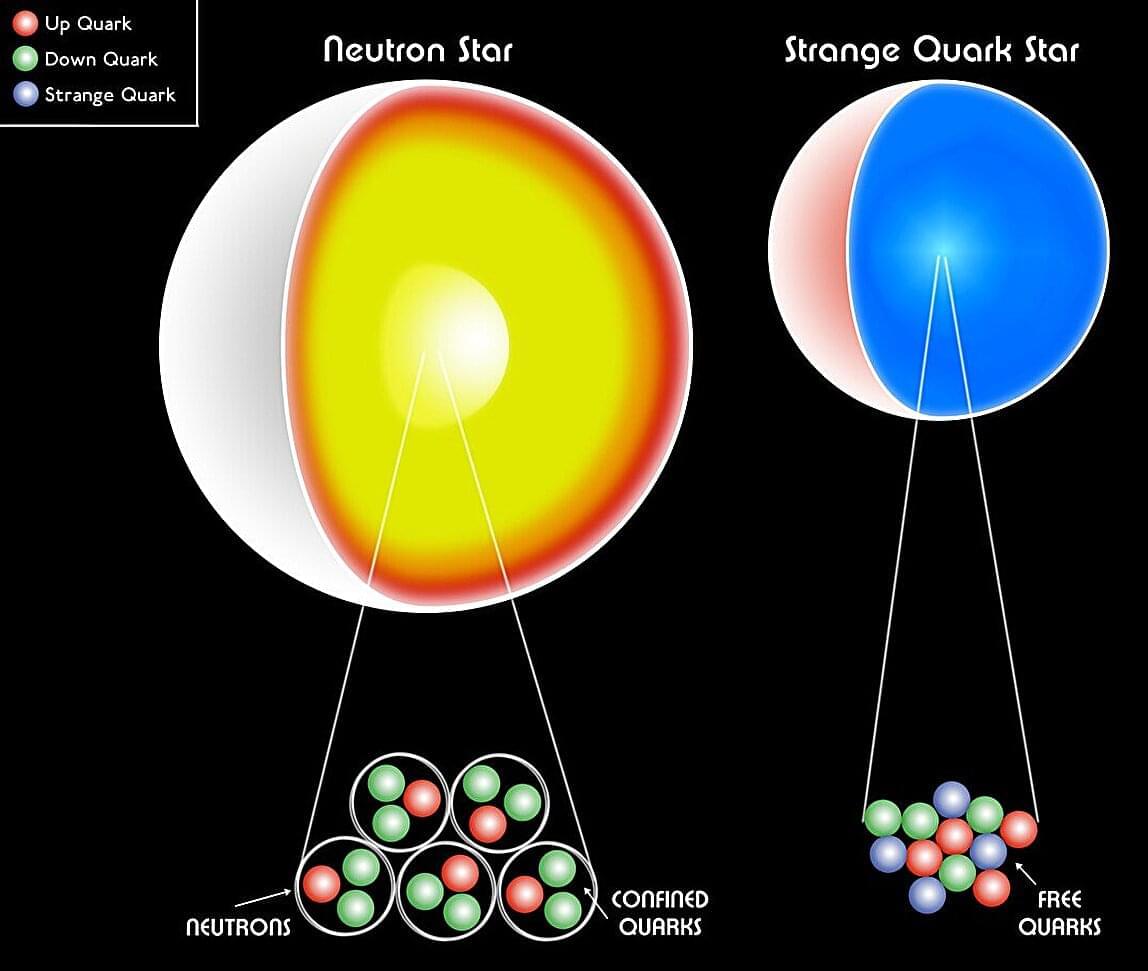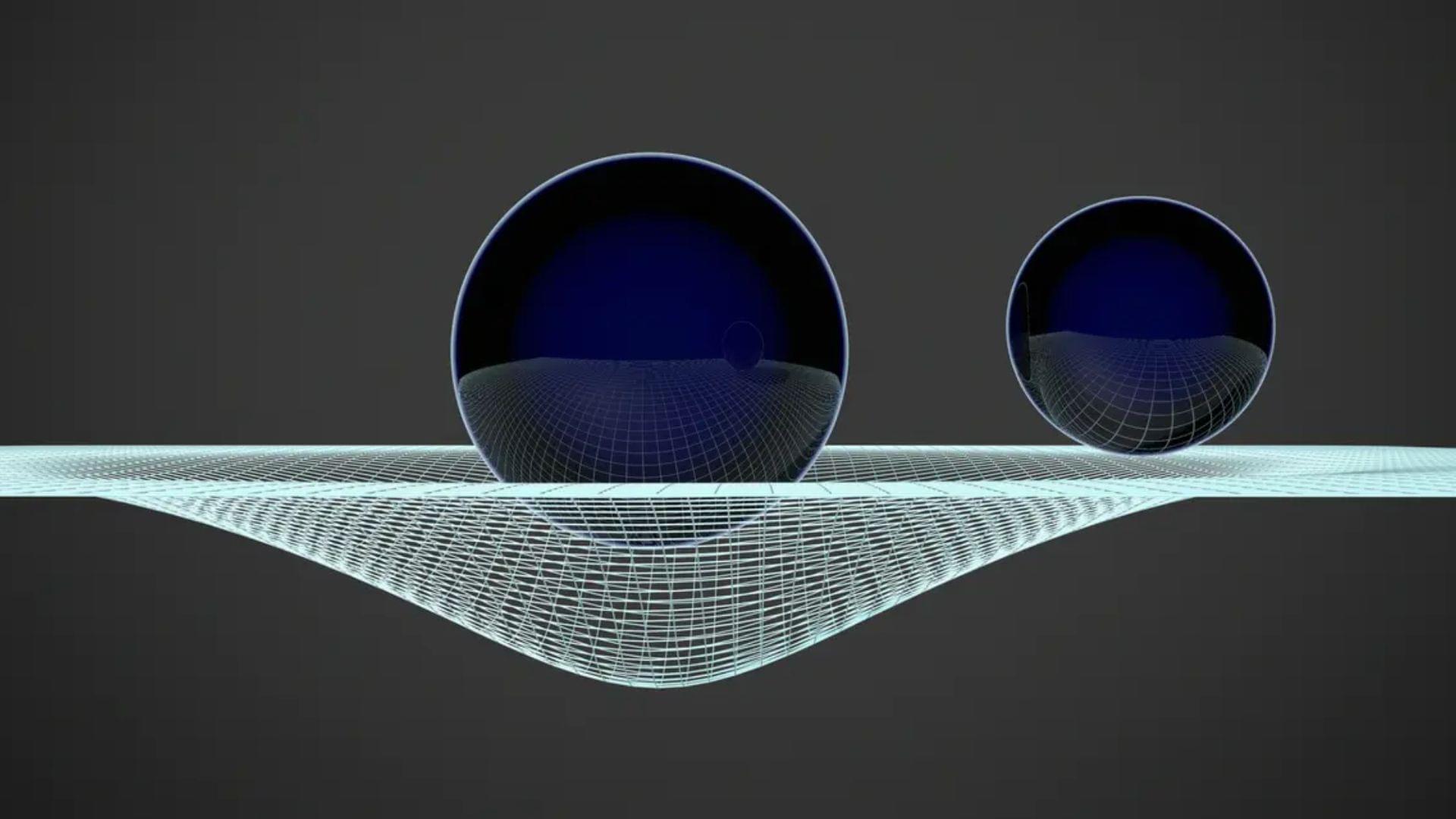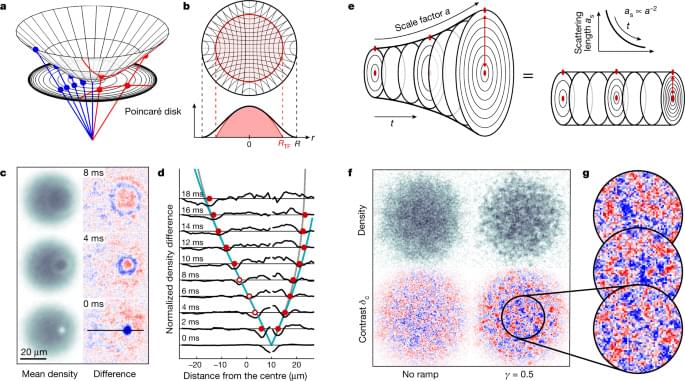JILA physicists make record-breaking measurement of a key electron property.
Category: particle physics – Page 4
Theorists proposed an idea they called quantum teleportation—a means of transferring the identity of one particle to another over some distance.
Study finds soccer teams move as though they are a single person, offering new insights into collective behavior
Posted in biological, finance, food, particle physics | Leave a Comment on Study finds soccer teams move as though they are a single person, offering new insights into collective behavior
What do albatrosses searching for food, stock market fluctuations, and the dispersal patterns of seeds in the wind have in common?
They all exhibit a type of movement pattern called Lévy walk, which is characterized by a flurry of short, localized movements interspersed with occasional, long leaps. For living organisms, this is an optimal strategy for balancing the exploitation of nearby resources with the exploration of new opportunities when the distribution of resources is sparse and unknown.
Originally described in the context of particles drifting through liquid, Lévy walk has been found to accurately describe a very wide range of phenomena, from cold atom dynamics to swarming bacteria. And now, a study published in Complexity has for the first time found Lévy walk in the movements of competing groups of organisms: soccer teams.
Buy me a coffee and support the channel: https://ko-fi.com/jkzero.
Part 3 of the groundbreaking but less-known theory of quantum mechanics proposed by Louis de Broglie in 1923. In this video de Broglie’s unification of wave and particles using his matter waves to show that Fermat’s principle of ray optics is equivalent to Maupertuis’ principle for the dynamics of particles. Although incomplete, this corresponds to the early development of de Broglie’s pilot-wave theory.
∘ Pilot-wave theory (part 1): the origin of de Broglie’s matter waves https://youtu.be/YQNEziGyDxU
∘ Pilot-wave theory (part 2): explaining Bohr’s atom https://youtu.be/5MMs6iFSiY8
∘ This is how the wave-particle duality of light was discovered https://youtu.be/f7JvywBOGYY
∘ Playlist Quantum Physics https://www.youtube.com/playlist?list=PL_UV-wQj1lvVxch-RPQIUOHX88eeNGzVH
∘ L. de Broglie, “Ondes et quanta,” Comptes Rendus Hebdomadaires des Séances de l’Aadémie des Sciences (Paris), 177,507 (1923)
∘ L. de Broglie, “Quanta de lumière, diffraction et interférences,” Comptes Rendus Hebdomadaires des Séances de l’Aadémie des Sciences (Paris), 177,548 (1923)
∘ L. de Broglie, “Les quanta, la théorie cinétique des gaz et le principe de Fermat,” Comptes Rendus Hebdomadaires des Séances de l’Aadémie des Sciences (Paris), 177,630 (1923)
∘ F. Grimaldi, “Physico-mathesis de lumine, coloribus et iride aliisque adnexis” (1665)
∘ I. Newton, “Optiks” (1704)
∘ L. de Broglie, “On the Theory of Quanta,” translation of doctoral thesis, Foundation Louis De Broglie (1924)
∘ A. Einstein, “Quantum theory of the monatomic ideal gas, Part II” Sitzungsber. Preuss. Akad. Wiss. 3, (1925)
M. de Broglie, public domain.
Diffraction half plane with rays, by MikeRun under CC BY-SA 4.0
Oualidia Lagoon, Morocco via Google Earth.
Matter Waves, AT&T Archives and History Center (1961)
Francesco Grimaldi, public domain.
First edition of Opticks, public domain.
Isaac Newton by Sir Godfrey Kneller, public domain.
Light refraction, by ajizai, public domain.
Interference pattern, by J.S. Diaz (own work)
Polarization clamp, by A.Davidhazy under CC BY-SA 4.0
Light bulb through diffraction grating, by R.D. Anderson under CC BY-SA 3.0
Davisson and Germer, public domain.
Davisson-Germer Figure 2, public domain.
Fifth Solvay Conference, AIP
Refraction with soda straw, by Bcrowell under CC BY-SA 1.0
Pierre Louis Moreau de Maupertuis, public domain.
P. Langevin, public domain.
Peter Debye, AIP
Portrait of Erwin Schrodinger, AIP
Eels Swimming in Aquarium by M. Ehlers, free use via Pexels https://www.pexels.com/video/eels-swimming-in-aquarium-10106765/
AIP: American Institute of Physics, Emilio Segrè Visual Archives.
CC BY-SA 1.0: https://creativecommons.org/licenses/by-sa/1.0/deed.en.
CC BY-SA 3.0 Deed: https://creativecommons.org/licenses/by-sa/3.0/deed.en.
CC BY-SA 4.0 Deed: https://creativecommons.org/licenses/by-sa/4.0/deed.en.
CC BY-SA 4.0: https://creativecommons.org/licenses/by-sa/4.0/deed.en
The shape is another important morphological feature that matters as a critical aspect of nanotoxicity. Studies have shown that shape plays a role in determining the cellular uptake of micro-nano particles (65, 66). SRS images of plastic particles confirmed the existence of shape diversity for micro-nano plastics in bottled water. To account for the shape of plastic particles in a statistical manner, we measure the aspect ratio of individual particles above the diffraction limit (Fig. 6 H). The aspect ratio is widely acknowledged in nanotoxicology studies (67, 68). The aspect ratio of the plastic particles detected ranges from 1 to 6, and the average aspect ratio for particles is around 1.7. Fig. 6 I–M provides a pictorial view of how the aspect ratio is related to the particle shape. Particles with an aspect ratio of above 3 are most likely to be fibrous in shape, while particles with an aspect ratio of below 1.4 will be largely spherical. Shape variation on plastic particles has been found in all polymers detected, confirming the widely recognized idea that real-world micro-nano plastics have diverse morphological prosperities. This dimension is hard to be resembled by engineered polymer nanoparticles commonly studied in research laboratories, and the toxicological consequences pertaining to real-life plastic particle exposures and their differing physicochemical properties (i.e., size, shape) have yet to be determined.
Researchers from Würzburg have experimentally demonstrated a quantum tornado for the first time by refining an established method. In the quantum semimetal tantalum arsenide (TaAs), electrons in momentum space behave like a swirling vortex. This quantum phenomenon was first predicted eight years ago by a Dresden-based founding member of the Cluster of Excellence ct.qmat.
The discovery, a collaborative effort between ct.qmat, the research network of the Universities of Würzburg and Dresden, and international partners, has now been published in Physical Review X.
Scientists have long known that electrons can form vortices in quantum materials. What’s new is the proof that these tiny particles create tornado-like structures in momentum space—a finding that has now been confirmed experimentally. This achievement was led by Dr. Maximilian Ünzelmann, a group leader at ct.qmat—Complexity and Topology in Quantum Matter—at the Universities of Würzburg and Dresden.
There are plenty of types of stars out there, but one stands out for being just a little weirder than the others. You might even say it’s strange. According to a paper from researchers at Guangxi University in China, the birth of one might have recently been observed for the very first time.
A strange star is a (so far theoretical) compact star that is so dense it literally breaks down regular parts of atoms (like neutrons) into their constituent quarks. Moreover, even those quarks (the up and down that comprise a neutron) get compressed into an even rarer type of quark called a strange quark—hence the name strange star.
Technically, the “strange” matter that a strange star would be composed of is a combination of up, down, and strange quarks. But, at least in theory, this mix of sub-hadronic particles could even be more stable than a traditional neutron star, which is similar to a strange star but doesn’t have enough gravity to break down the neutrons.
Physicists have long attempted to find a single theory that unites quantum mechanics and general relativity.
This has been very tricky because quantum mechanics focuses on the unpredictable nature of particles at microscopic scales, whereas general relativity explains gravity as the curvature of spacetime caused by massive objects.
The two theories discuss forces existing on different scales. Bianconi employed an interesting approach to deal with this challenge. She proposes an entropic action where, instead of being a fixed background, spacetime works like a quantum operator — acting on quantum states and deciding how they change over time.
The behaviour of quantum fields in curved spacetime is simulated using a two-dimensional trapped quantum gas of potassium atoms with a configurable trap and adjustable interaction strength.
During the study, the engineers used the quantum property to track the electrical activity of the heart muscles and cells.
